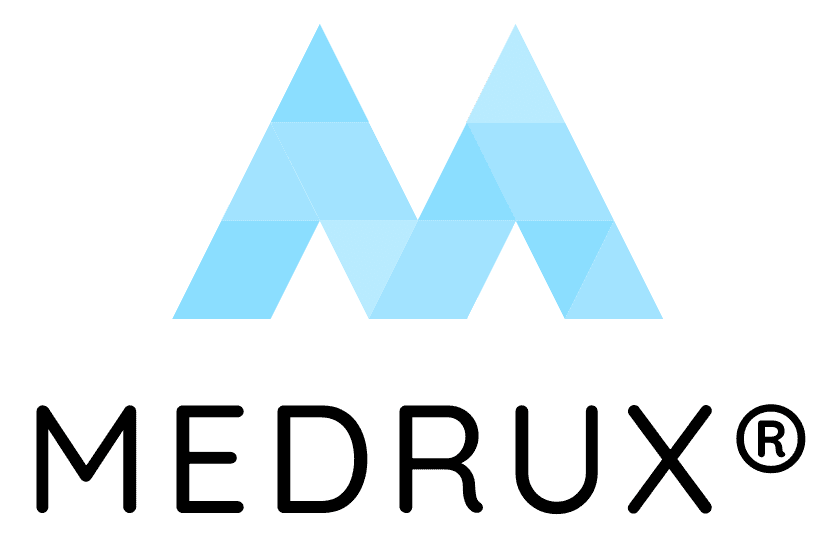The COVID-19 pandemic has changed the world around us.
Disposable scrubs are one of the things that have been of great importance and are now widely used in our everyday lives and health care facilities.
Healthcare facilities such as hospitals, surgery centers, doctors’ offices, dental offices, and clinics worldwide are constantly thriving to minimize and prevent the spread of germs, bacteria, and infection.
Paradoxically, they are the homeland of microbes.
Because people are always there for sickness, surgery, or a procedure that involves blood, body fluids, and air droplets from sneezing and coughing, etc.
Numerous infection control measures are used in these places where infection and contamination rates are the highest.
One of these measures is using PPE, including disposable scrubs, gloves, masks, etc.
Are you looking for disposable scrubs? Do you want to know more about them and why they are essential in the healthcare industry?
This article will go through all these and more to inform you about this essential PPE.
Why is it important to wear disposable scrubs?
According to the National Nosocomial Infections Surveillance (NNIS) system, in 2002, approximately 1.7 million HAIs (hospital-acquired infections) and 99,000 associated deaths occurred in U.S. hospitals, leading to extra costs of up to $6.5 billion each year.
While the CDC estimated in 1995 that approximately 1.9 million HAIs occurred. (1)
In healthcare facilities, where microorganisms are everywhere, disposable scrubs provide a barrier between the skin and the microorganisms and pathogens, giving the healthcare provider adequate patient protection.
In addition to providing protection, they prevent cross-contamination and reinfection.
Disposable scrubs reduce the spread of infection and diminish the chances of acquiring HAIs (Nosocomial infections) during hospitalization.
Moreover, they contribute highly to the health care facility’s effective infection control measures.
Let’s see a brief history of disposable scrubs.
What are disposable scrubs?
Like a pandemic today, a pandemic made them useful, as they first appeared in 1918 when the Spanish flu struck, but they were not disposable scrubs back then.
Before the 1800s, surgeons used to wear black coats stained with pus and dried blood from past operations.
Then, things were even more dramatic: they wore butcher’s aprons!
Weirdly, it was the mark of success and honor, either the stains of pus on black or the quantity of red blood on the apron.
Thankfully, this all came to an end by the 1940s when people realized how unsafe and ugly that was and how the knowledge of viruses and wound infection had improved.
However, it wasn’t until the 1970s that reusable and disposable scrubs became popular and began to be as we know them today.
It was initially used by surgeons and other operating room staff when they sterilized themselves or “scrubbed in” before surgery.
That’s why it’s called “scrubs.”
Now, reusable and disposable scrubs have come a long way, providing protection and sterility and enhancing safe environments in hospitals.
As better, more sanitary, and more disposable materials became available, disposable scrubs entered our world and became indispensable.
How do different materials contribute to disposable scrubs’ quality?
Disposable scrubs look just like regular reusable scrubs, but they are made of lightweight, breathable, and fluid-resistant materials.
They’re made of a low-linting non-woven material in a controlled environment to minimize contamination.
So, what does this mean?
Low-lint means the fabric has no tiny hairs, so you can cleanse it without depositing cloth residue or fibers.
Nonwoven fabric means that the fabric isn’t woven, knitted, or sewed together.
Instead, the fibers are held together by interlocking or bonding through chemical, mechanical, or thermal processes.
They’re not only used in making disposable scrubs.
Why?
Because they possess versatile qualities such as softness, strength, liquid repellence, bacterial barriers, filtering, and sterility.
So, they can create various products in versatile industries at a reasonable price. Nonwoven fibers have changed the game for many industries, now involved in hundreds of products.
In the health industry, they’re used in making disposable scrubs, gowns, swabs, bandages, dressings, and sterile wraps and packaging.
In other industries, you can find them in tea and coffee bags, wipes, reusable bags, cosmetic removers, civil engineering textiles, etc.
Today, non-woven textiles are the prime material for PPE, including disposable scrubs.
Why?
They’re super absorbable and resilient, offering an excellent combination of effectiveness and affordability.
However, the various nonwoven materials available offer different levels of protection.
So, what are they, and what is the difference between each of them?
There are two primary materials used to make disposable scrubs
-
SBPP: spun-bond polypropylene (SBPP)
-
SMS: spunbond-meltblown-spunbond (SMS).
Both are polypropylene, a thermoplastic polymer “made from the combination of propylene monomers.”
It’s melted and turned into fibers to make disposable scrubs and masks.
Why?
Polypropylene is generally known for its lower air and wound bacterial contamination than conventional cotton.
Additionally, it has moisture-resistant properties, highly needed in environments where body fluids are everywhere!
Moreover, it can be colored easily, making it perfect for creating different colors for color-coding purposes.
-
SBPP: spun-bond polypropylene.
The most fundamental polypropylene-based nonwoven fabric
It’s created by combining sheets of propylene using a process called calendaring.
They pass the sheets between rollers at a high temperature and pressure until they achieve the desired weight and thickness.
They’re long, loosely bonded fibers with large pores.
Offers elemental moisture resistance, breathability, and excellent durability.
- SMS: spunbond-meltblown-spunbond.
It combines two layers of spun-bond polypropylene, layering them with a central layer of melt-blown nonwoven fabric with the same calendaring process described above.
(Meltblown fabric is made of polypropylene and other polymers extruded into nanofibers using a high-speed blowing gas)
Offers exceptional bacterial infiltration, excellent fluid resistance, outstanding durability and flexibility, and moisture repellent properties.
Additionally, it offers high tensile strength, toughness, and tear and puncture resistance.
They can be mixed with different materials for different levels of protection and strength, such as polyethylene and chlorinated polyethylene.
Moreover, they’re anti-static, and some are made to have medical repellent properties (anti-alcohol, anti-blood, anti-oil).
To summarize, disposable scrubs are made of lightweight nonwoven materials such as SMS & SBPP; they offer high tensile strength, durability, and flexibility to the wearer.
With exceptional bacterial, fluid, and moisture resistance, everyone should seek the blend of protection and comfort!
That brings us to our next big question!
Are disposable scrubs better than reusable scrubs?
Studies generally indicate that disposable scrubs are at least as effective and in some cases, a more practical option for infection control than reusable ones.
Let’s see the answer to this question in detail.
The answer is unequivocal “YES” in reducing infection and cross-contamination!
Why?
The fact that they are single-use contributes highly to our answer.
Many studies show that microorganisms can live on scrubs and lab coats for weeks.
And these contaminated fabrics are a source of transmission and contamination. (2)
Consider a doctor moving from patient to patient while wearing the same scrub in the case of COVID-19 or any other disease.
Disastrous, right?
The viral load rises, and healthy patients may become infected with something they don’t have.
Wearing disposable scrubs overtop of your clothing and properly disposing of them after each patient helps contain contaminants before they spread to laundered service workers, your home, or other patients.
Moreover, significantly higher bacteria counts were isolated from home-laundered scrubs and unwashed scrubs than from new, hospital-laundered, and disposable scrubs (3).
This means disposable gloves are better than having your reusable scrubs bleached or disinfected at home, and sometimes it’s not practical to wash them in the hospital.
Using disposable scrubs and then throwing them away means fewer organisms living on them.
What’s more, healthcare facilities can cut down on contamination and infection without relying on their staff to disinfect their reusable scrubs at home.
Disposable scrubs are a win-win situation for both the foundation and the personnel.
What about the protection level?
Still, our answer is yes; disposable scrubs are better than reusable scrubs.
Reusable scrubs can wear down over time because of repeated use, handling, laundering, decontamination, storage, and transportation.
Eventually, they might provide less protection over time, exposing the staff to germs and pathogens and just doing the opposite of what they were supposed to do.
Moreover, reusable scrubs can give the wearer a false sense of security.
You will probably wear them for a long time. Some people don’t wash them frequently, making them unaware of how much bacteria they could carry around.
On the other hand, high-quality disposable scrubs are used once, and every time you use a new clean one, it provides the same level of protection, and it’s removed once the shift is over, so there’s no need to worry if you’re spreading germs everywhere you go.
However, environmentally speaking, some studies show that disposable scrubs are not the best compared to reusable ones.
Reusable scrub has an overall lower environmental impact. (4)
To summarize, in terms of protection, reducing infection and cross-contamination. Disposable gloves are better than reusable ones; in addition, they offer ease of use, and they’re time-saving.
Yet, reusable one has a better environmental impact.
In addition to being protective, valuable PPE in the healthcare industry, lets’ see ten more reasons why you should consider disposable scrubs.
Ten more reasons why you should consider disposable scrubs
-
They are breathable and flexible.
Disposable scrubs are made of highly breathable materials.
They’re soft on the skin, offering great comfort and anti-moisture properties to prevent sweat in heated environments.
They are stretchable, providing the wearer with ease of movement and flawless flexibility.
Such things are tremendously important in places where staff have to move quickly, decisively, and efficiently, like the ER, critical care, ICU, etc.
-
Disposable scrubs give comfort and dexterity to the wearer.
Disposable scrubs usually fit very well.
The soft materials give them a linen-like texture, which is why they’re super comfortable to wear.
What’s more, they’re anti-static for extra comfort with an elastic waistband.
Healthcare professionals stand on their feet for long periods, whether in long surgeries, patient examinations, lifting, moving around in the clinics, or simply caring for patients.
Disposable scrubs provide great comfort when doing tiring and physically straining tasks around the office without hindering movement.
For some patients, disposable scrubs are far preferable to hospital gowns!
Why?
Hospital gowns can feel too revealing and uncomfortable, unlike disposable scrubs, which are made with multiple layers, so they are opaque for moderate coverage, giving the patient the comfort they need.
-
Various sizes and designs.
Disposable scrubs have unique designs in various sizes.
They’re unisex, so they can fit everyone.
They have several convenient fronts and rear pockets for penlights, surgical scissors, stethoscopes, and ophthalmoscopes.
You can buy disposable scrubs in parts, such as shirts, shorts, or trousers. As a result, you can easily interchange or replace as needed.
They could be in a reinforced V-neck or U-neck for your preference and for easier donning and doffing.
Such simplicity of design offers a minimal place for contaminants or microorganisms to hide. Consequently, more and more protection.
-
Disposable scrubs prevent eye strain.
Most reusable and disposable scrubs used in the medical field are made in green or blue shades.
Why?
These colors provide surgeons with visual accuracy.
When scrubs were first invented, they were white.
Scientists noticed it caused eye strain and headaches.
How so?
Because surgeons spend so much time looking at the patient’s blood and pinkish to red organs, they can sometimes experience green illusions similar to the effect of a camera flash.
Green and blue are natural colors, so when the surgeon looks up into their contrasts in disposable scrubs, this is significantly reduced, and he can take a break after long hours of staring into the red.
However, non-surgical disposable gloves could be of different colors.
-
Time-saving and easy-to-use
Being disposable reduces the burden of cleaning and laundering and saves more time.
So, there are no messes or more laundry or laundry costs to worry about when you get home or change your clothes.
They are also provided by healthcare facilities, so you needn’t worry about them being lost or damaged if you take them home because you don’t!
Some hospitals now provide vending machines for disposable scrubs for a simpler, cleaner, more organized and less time-consuming process.
-
Disposable scrubs are affordable and practical
As we mentioned above, disposable scrubs are less likely to cause infection and cross contamination, largely contributing to a lower burden on hospitals to treat patients who acquire infection in this way.
The price of disposable scrubs is less than that of reusable ones. Especially since they are made of materials that can be manufactured at a very low price.
Disposable scrubs are affordable and practical, making them an excellent combination for hospitals to purchase in bulk.
-
Disposable scrubs are professional
Disposable scrubs can help keep a sense of professionalism in a place of work.
They make it easy to know who is hospital staff and a visitor, significantly contributing to patient safety and privacy as you know who should be in the place and who shouldn’t just by the scrubs they are wearing.
In addition, they help discourage staff from wearing controversial personal outfits, which lack professionalism and may be the source of unnecessary conflict.
It also helps the team spirit because everyone usually wears the same “uniform.”
-
Disposable scrubs used in various jobs
Disposable scrubs are worn chiefly by medical staff who work within hospitals, such as doctors and nurses, but anyone visiting a hospital can be asked to wear them. Sometimes patients in the hospital can wear them as well.
Moreover, they are helpful, especially for patients being taken into mental health facilities while they wait for their clothes to arrive.
Other medical professionals, such as vets, dentists, caregivers, or midwives, are also worn.
Nevertheless, they can be used in various fields other than the medical field.
Here are some of the jobs where disposable scrubs can be of great help.
- The food industry: provide comfort, cleanliness, and dryness to the workers.
- Hair salons: protect against water splashes, hair dye stains, and cut hair.
- Cosmetic clinics and centers have different face masks that could simply stain the clothes. Wearing disposable scrubs maintains cleanliness and a good image in front of your clients.
- Painting: painters love them as they are waterproof, protecting against paint and water and keeping their clothes dry.
- Butchering: Just as surgeons used to wear butcher’s aprons in the past, why not vice-versa? Dealing with blood all day can be stressful, and no one likes to walk around with clothes full of blood stains. Disposable scrubs can help keep your clothes dry and keep you looking clean after a long hard day full of knives and blood.
- Veterinary: When working with animals, you must be protected against infections caused by bites, fluids, hairs, blood, and so on.
- Cleaning jobs: help protect you against being wet by water or household detergents.
-
They can be customized.
Disposable scrubs can be customized to have anti-microbial and antiviral properties, flame retardant, hypoallergic, etc.
-
Disposable scrubs are latex-free
If you wear disposable scrubs throughout the shift, you won’t have to worry about latex allergies.
They are latex-free, so they are suitable for everyone.
In conclusion,
Disposable scrubs can help reduce infection, cross-contamination, and hospital-acquired infection.
They help maintain clean and dry environment and protect the patient and the healthcare giver.
Disposable scrubs are lightweight yet durable nonwoven materials, like SMS & SBPP.
Moreover, they’re flexible, breathable, fluid, and anti-microbial resistant.
Disposable scrubs Prevent eye strain and offer comfort and protection to the wearer.
They’re professional, affordable, time-saving and easy-to-use.
That’s why they are popular not only in healthcare facilities but you can also see them in salons, cosmetic centers, food industries and painting workshops.
There are all the glorious reasons why you should consider using disposable gloves in your facility.
We hope we have made it easier for you to decide and you found this article informative and fully equipped with everything you need.
If you have any more questions about disposable scrubs, don’t hesitate to send us.







